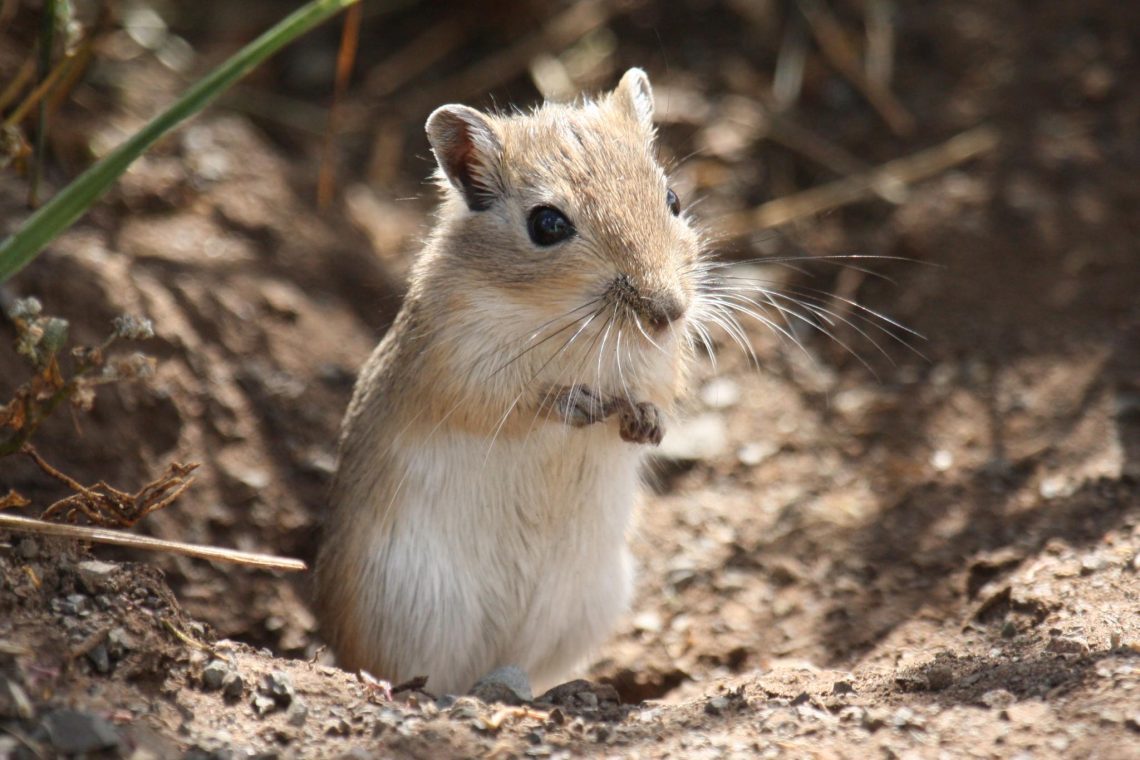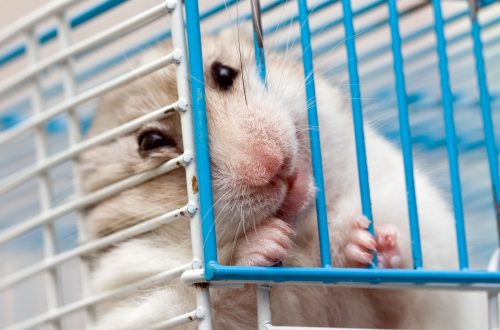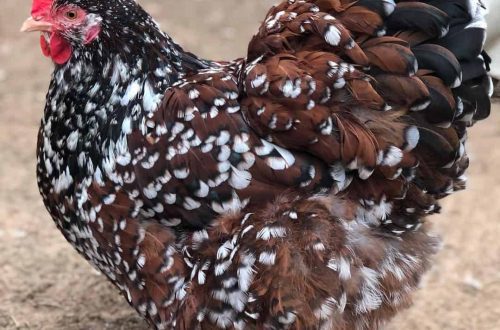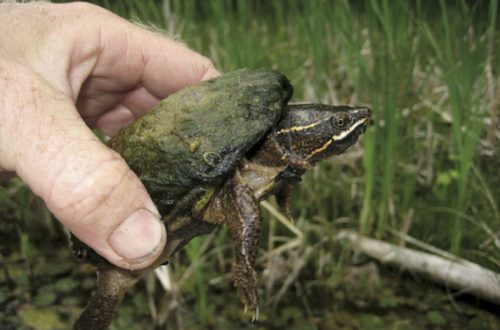
Mongolian gerbil – what kind of animal is it, and how to keep it?

Especially popular as a pet are clawed, or Mongolian gerbils (lat. Meriones unguiculatus). In nature, the Mongolian gerbil inhabits semi-deserts, deserts and steppes of Mongolia; in Russia, gerbils live in the Republic of Tyva, in southern and eastern Transbaikalia. The size of an adult gerbil is up to 20 cm with a tail, weight 75-120 g. They have a pubescent tail with a tassel at the end.
Average life span is 3 years.
The natural color of the gerbil is agouti, domestic gerbils have many more colors. Eyes can be either black or red or ruby.
It is better to purchase small animals, about 2 months old, to facilitate taming and getting used to. In addition, in nature, gerbils live in family groups – 1 male, 1-3 females with cubs, so the gerbil is much more comfortable if she has a friend. It is best to take brothers or sisters from the same litter to live in a same-sex group. If you take a male and a female, the appearance of offspring is inevitable. Gerbil pregnancy lasts from 23 to 45 days, cubs – an average of 5-6 pieces are born small, naked, blind and deaf. The eyes open after two weeks, the mother gerbil feeds the cubs for up to 1,5 months.
When a new gerbil settles into an already formed pair of animals, fights are inevitable up to the lethal outcome of the newcomer, in nature they are territorial and do not let strangers into their own. If you still have to resettle adult gerbils, you can do this in several ways:
- Neutral territory. Gerbils are placed in neutral territory away from the cage, in a limited space, such as a bath. In advance, you need to prepare a container and thick gloves to break up the fight, in case of aggression, in no case should you grab gerbils with your bare hands, despite their size, they bite noticeably and easily twist out of your hands. On neutral territory, the roles of gerbils are determined, and if they do not try to attack each other, sniff each other, even clean their fur, then you can try to settle in one cage.
- Partition. The main cage of gerbils is divided in half by a metal partition, strong enough and well reinforced so that the animals cannot break it and get to each other. By sniffing and looking at each other, they get used to the presence of a new individual on the territory, and when they stop showing signs of aggression, the partition can be removed.
If the gerbils continue to behave aggressively, then you can try to make a second attempt to sit down. To do this, you will need to put both gerbils in different cages, and put them away from each other (for 2-3 days), and then try to introduce them again.
It also happens that gerbils cannot get along well and do not agree to get along together. In this case, you will have to settle each gerbil in a separate cage, or look for a new pair or even a new home for one of the gerbils.
The cell and its content
- Gerbils need to be kept in a metal cage, preferably with a high tray, and there are options with a container/aquarium on the bottom and a cage on top, can be kept in a well-ventilated closed display case, a reasonably large dune or an aquarium with a mesh on top. Gerbils are very fond of digging, and therefore, for maximum comfort, a large layer of corn or paper filler or large sawdust of non-coniferous wood (10-15 cm) should be poured into the bottom of the container. To create a cozy nest, animals will not refuse hay, napkins and paper towels without dye. Gerbils and their secretions practically do not smell, and they emit very little moisture, so the filler can be changed not very often, about once every 2 weeks.
- It is convenient to hang the feeder above the level of sawdust or on the second floor of the cage, otherwise the animals may try to bury it. Metal and ceramic bowls are the most convenient.
- A drinker – ball or nipple, should be mandatory, despite the fact that in nature gerbils practically do not drink water, getting moisture from food. Water bowls do not need to be placed, usually they are turned upside down and buried.
- The gerbil house should be big enough to accommodate living gerbils and be made of wood, ceramic, glass, or coconut. Aquarium ceramic decorations can also work, without sharp edges and sufficient volume and without such holes and elements where a gerbil could get stuck.
- The wheel will help to make up for the lack of movement in the not very large space of the cage. The wheel should be at least 20 cm in diameter, and solid, preferably made of wood or metal mesh with cells smaller than the gerbil’s front paw and larger than her toe. A wheel with crossbars is traumatic for rodents, it is fraught with fractures of the limbs and tail.
- Entertainment and toys. As toys, you can offer gerbils wooden bridges, large snags or tree roots, twigs, saw cut trunks, well-crafted and not coniferous, wooden balls and other toys for rodents, cardboard sleeves from toilet paper and towels, boxes, tunnels and pressed or wicker baskets, baskets, hay tunnels. Toys, like other items in a cage, will certainly be chewed on, so toys must be safe for gerbils. In no case should you offer gerbils as toys or instead of napkins rags, cotton wool, microfiber and non-woven napkins, soft and plastic toys.
- Mineral stone. The stone that is screwed to the wall is most convenient for gerbils, so it will always be available and will not get lost in the sawdust. It is needed to replenish the necessary minerals and salts in the body of a gerbil.
- Bathing suit. Gerbils bathe in the sand like chinchillas, cleaning their fur from dirt and grease. Purchased special swimsuits, glass round vases, bowls, containers can act as a bathing suit. You can install a bathing suit in a cage in a permanent place, or put it in about once every 1-2 weeks. Washing gerbils in water is highly discouraged.
What to feed gerbils?
In nature, gerbils feed on seeds and succulent plants. In pantries, arranged in long branched burrows, stocks of seeds are also stored, sometimes reaching 3 kg. for one individual. Pet gerbils are fed quality grain or gerbil pellets, if not found specifically for gerbils, can be replaced with hamster and mouse food, rats. If there is a lot of peanuts and sunflower seeds in the feed, it is better to choose them and give them out little by little, as a treat. Additionally, you need to offer the gerbil juicy food, with a relatively neutral taste: not very sweet and not sour apples, zucchini, pumpkin, green peas, carrots, cucumber, dandelions, wheatgrass, clover, germinated seeds of oats, wheat, millet and sunflower. All greens should be collected away from roads and washed well. Gerbils also need protein in their diet, so it is advisable to include fodder insects in it – for example, live, thawed flour worms, locusts, cockroaches or crickets – a little, low-fat cottage cheese, a small amount of egg white, cat food of at least super-premium class. As treats, gerbils are offered unroasted sunflower seeds, pumpkins, peanuts, hazelnuts, raspberries, peaches, raisins, currants, gooseberries, bananas, blueberries, pitted dried fruits (dried without adding sugar and syrups), twigs of deciduous and fruit trees (not coniferous and not stone fruits), dried dandelion root, sometimes biscuits for rodents or croutons of white bread without salt and spices, baskets or sticks of pressed grass.
- ! Gerbils should not include cabbage, legumes, grapes, almonds and seeds of plums, apricots, etc., sorrel, any citrus fruits, plums, avocados, parsley, onions, garlic, radishes, ginger, hot peppers, radishes, Jerusalem artichokes, potatoes, sprigs of apricot, cherry, plum, acacia, elderberry, any coniferous, buckthorn, laurel, chestnut; food from your table: fatty, fried, salty, smoked, sweets, spicy, pickled, vegetable and animal oils and fats, milk, fresh bread, buns, pasta, cookies, honey, candied fruit, jam, sausage, sausages, lard, cheese , ice cream, mushrooms, alcohol, chips, etc.
Communication with gerbils
If the gerbil was taken as a cub or from a trusted breeder, most likely there will be no problems with behavior and domestication, they quickly get used to a new habitat and owner. If the gerbil is taken from the market or from a pet store, it is possible that it will not be tame, it can break out and bite, you will need to accustom it to yourself, to your hands, to be trustworthy. The easiest way to get used to the hands is to offer treats with an open hand, while doing this do not make sudden movements, and do not rush to touch the gerbil so as not to scare it. Over time, she will begin to trust you, she will even climb onto her palm, or even higher, onto her shoulder. Gerbils have a different character and temperament, someone is shy and distrustful, someone is sociable and bold. And with those who do not mind talking, you can play by rolling wooden balls or reels, arrange a search for goodies in a maze of boxes and tunnels. Take a gerbil in your hands carefully, picking up from below. You can take the tail only at the base, and immediately substituting your hands to support the paws. If you take the gerbil by the tip of the tail, she can shed the skin from it, later the bare tip will dry out and never recover, and the gerbil will lose the cute tassel on the tail. And, of course, in no case should you punish or frighten a gerbil, splash water at it, push it, throw it up, scream, or simply blow it – all this will lead to stress and harm to the gerbil’s health. The gerbil is a very interesting, agile animal with many interesting behaviors. With a well-equipped cage and a friendly attitude, they are very interesting to watch.





